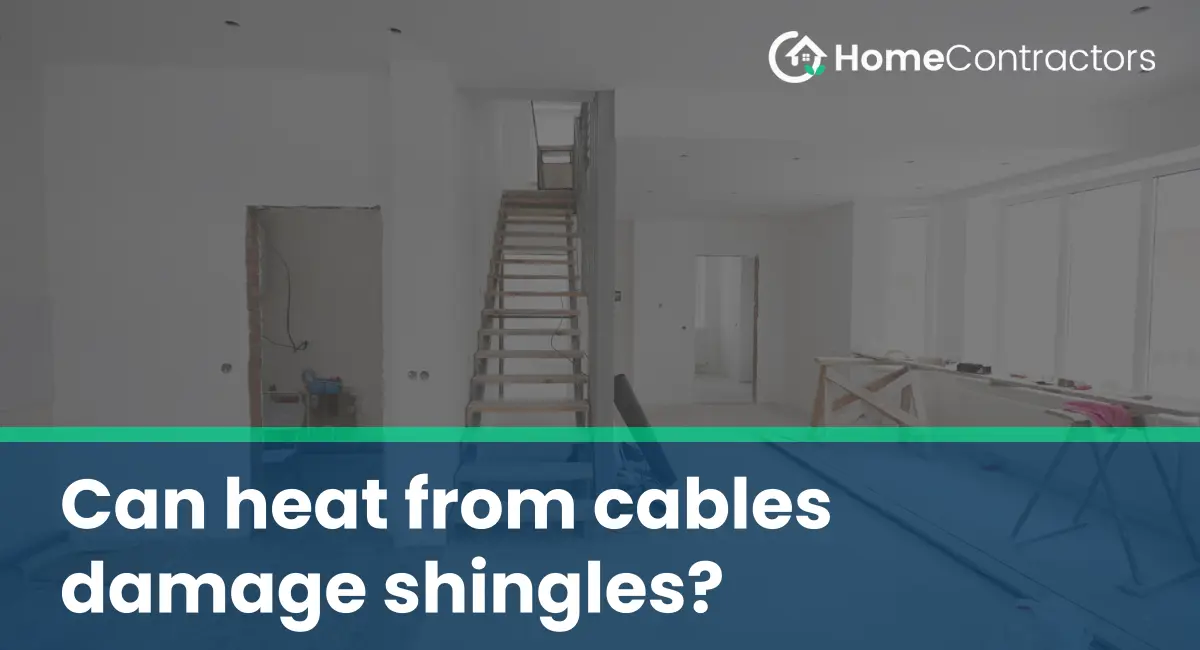When it comes to protecting our homes during the winter months, many of us rely on heat cables to prevent ice dams from forming on our rooftops. While these cables are effective in preventing water damage, one question that often arises is whether the heat generated by these cables can potentially damage the shingles. In this article, we will delve into this topic and explore the potential risks of using heat cables on shingles.
Understanding Heat Cables and Their Function
Heat cables, also known as heat tapes or roof de-icing cables, are electrical cables specifically designed to melt ice and snow on rooftops. When installed properly, these cables can help prevent the formation of ice dams, which occur when snow and ice melt and refreeze at the roof’s edge, causing water to back up under the shingles. This backup can lead to leaks and water damage if not addressed.
The Potential Risks of Heat Cables on Shingles
While heat cables are a valuable tool in preventing ice dams, they do pose some potential risks to the shingles themselves. The primary concern is that the continuous exposure to heat from the cables may cause the shingles to degrade over time. This degradation can manifest as cracks, curling or warping, or even premature aging of the shingles. Additionally, the heat from the cables may also cause damage to any underlying material, such as the roof decking or insulation.
Factors Affecting Shingle Damage
Several factors determine the level of risk associated with using heat cables on shingles. These factors include the duration and intensity of heat exposure, the quality and condition of the shingles, and the overall roofing system. Older or poorly maintained shingles are more susceptible to damage, while higher-quality and well-maintained shingles may withstand the heat more effectively.
Installation Considerations
Proper installation of heat cables is crucial to minimize the risk of shingle damage. The cables should be installed in a zigzag pattern along the lower edge of the roof, commonly referred to as the eaves or gutters. It’s essential not to install the cables directly on top of the shingles, as this can lead to direct heat exposure and potential damage. Instead, the cables should be installed underneath the first row of shingles, ensuring that the heat is evenly distributed.
Monitoring and Maintenance
Regular monitoring and maintenance are essential when using heat cables to protect your roof. It is recommended to inspect both the cables and the shingles periodically to detect any signs of damage or degradation. If you notice any cracks, splitting, or warping of the shingles, it is crucial to address the issue promptly to prevent further damage. Regular cleaning of the gutters and downspouts is also necessary to ensure proper water drainage and reduce the risk of ice dams.
Alternative Solutions
If you are concerned about the potential risks associated with using heat cables on your shingles, there are alternative solutions available to prevent ice dams. Consider consulting with a roofing professional who can assess your specific roofing system and recommend appropriate alternatives. Some options may include improving insulation and ventilation to minimize heat transfer to the roof or utilizing snow and ice melting systems that rely on heated water rather than electrical cables.
While heat cables can be effective in preventing ice dams, it is important to be aware of the potential risks they pose to shingles. Proper installation, regular monitoring, and maintenance are key to minimizing the chances of shingle damage. Additionally, exploring alternative solutions may provide added peace of mind for homeowners concerned about the long-term effects of heat cables on their roofing systems. Ultimately, understanding the potential risks and taking necessary precautions will help ensure the durability and longevity of your shingles while still protecting your home from the damaging effects of ice dams.
